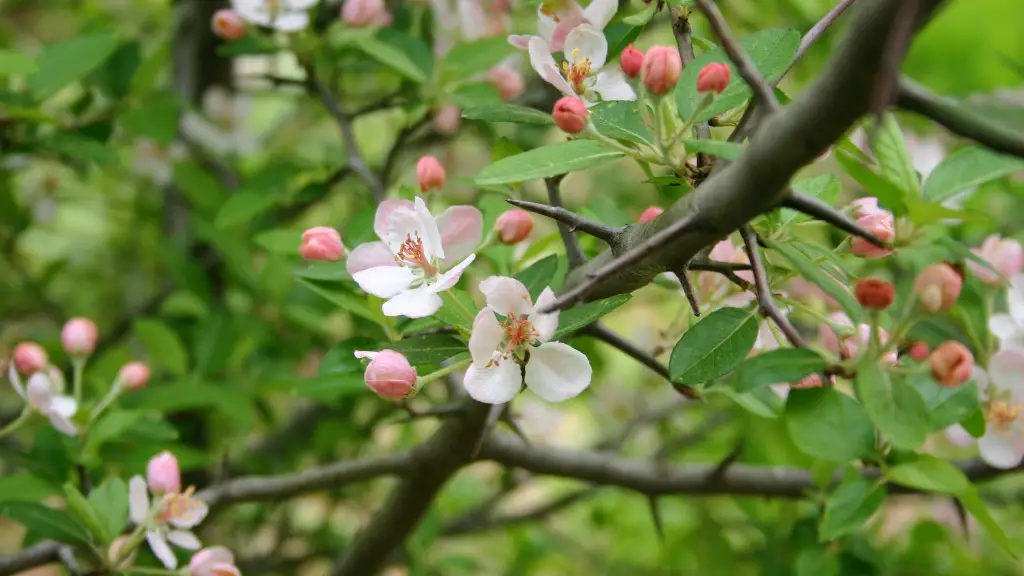It is possible to grow a lemon tree from a cutting, and is a great way to propagate a variety of citrus varieties. There are a few important steps to take when propagating from a cutting in order to ensure it will grow strong and healthy. Firstly, choose a healthy parent plant from which to take your cutting. If the plant is healthy, chances are your cutting will be healthy and strong as well.
Secondly, when taking the cutting, make sure to use sharp pruners or shears to ensure you have a clean cut. Make a cut approximately four inches long, and ensure to cut below a node, which is a small bump on the stem where a new branch or leaf may grow. After cutting the section of stem, immediately dip the end of the cutting in rooting hormone.
Thirdly, be sure to pot the cutting in moist but not water-logged soil, and place in a warm, indirect light area. You need to keep the soil moist, yet not overly saturated, in order to help the cutting to root. To help the cutting stay moist, cover the pot with a clear plastic bag or a glass jar.
Fourthly, water the cutting in semi-regular intervals, allowing the soil to dry out between watering, and be sure to not over water. Over-watering can kill a young cutting, so check the soil often to make sure it is not overly saturated.
Lastly, fertilize the lemon tree monthly using citrus fertilizer. Apply using the fertilizer directions and keep an eye out for any pest or disease that may affect the plant. Once your lemon tree has taken root and has established itself, you can transfer it to a larger pot, and be on your way to enjoying homegrown lemons.
Choosing the Right Parent Plant
When propagating a lemon tree from a cutting, it is essential to choose the right parent plant. Only a healthy parent plant will ensure you propagating a healthy cutting, able to root and grow into a healthy tree. A healthy parent tree will have green and vibrant, yet not overly large, leaves, and will bear fruit if it is a grafted tree. Make sure to avoid selecting a plant from a citrus tree that has yellowed leaves, as these can be signs of a stressed, or even diseased, tree, and the cutting taken from it is more likely to fail.
Planting the Cutting
When planting the lemon tree cutting, it is important to treat with the utmost care. Dip the end of the cutting in a rooting hormone before planting, preferably in a soil specifically formulated for citrus trees. Place the cutting in partial shade and keep misting it with water and keep the soil damp, to help the cutting take root. Mist the cutting every day, or cover the cutting with a plastic bag or glass jar to help create humidity and control the water loss.
Potting and Transplanting
When the newly planted cutting starts to sprout a few new leaves, it is time to move it to a bigger pot. During this stage, the most important thing is to keep the soil moist and make sure the plant is receiving enough light. Move the cutting to a larger pot as soon as it is sprouting new growth and roots. Make sure to use a pot with drainage holes and a well-draining potting mix.
Care for the Tree
Once your lemon tree has been potted, you need to ensure you are taking proper care of the tree. Water regularly but do not over-water, as trees can suffer from regular over-watering. Fertilize the tree regularly with a citrus fertilizer, following the directions on the fertilizer package. Keep an eye out for pests or diseases that may affect the foliage and capacity of the plant. Prune dead or dried branches, and ensure the tree receives enough sunlight.
Harvesting the Lemons
As your lemon tree grows, you will be able to start enjoying homegrown lemons. Initially the production of lemon is low, but it increases with the age of the tree, and in a few years you can expect to have many fruits. Harvesting lemons from your own tree is a joyous experience, and totally worth the effort of propagating from a cutting.
Disease and Pest Control
It is important to monitor your lemon tree for signs of pests or diseases that may affect the health of the tree. Common pests such as mealybugs and spider mites, as well as certain fungal diseases, can affect the citrus trees, and proper control is essential. You can inspect the tree regularly, and look for signs of pests or diseases. If issues are found, handle them with appropriate treatment to ensure the health of the tree.

